Lyana Curier
Statistics Netherlands
cDVGAN: One Flexible Model for Multi-class Gravitational Wave Signal and Glitch Generation
Feb 07, 2024Abstract:Simulating realistic time-domain observations of gravitational waves (GWs) and GW detector glitches can help in advancing GW data analysis. Simulated data can be used in downstream tasks by augmenting datasets for signal searches, balancing data sets for machine learning, and validating detection schemes. In this work, we present Conditional Derivative GAN (cDVGAN), a novel conditional model in the Generative Adversarial Network framework for simulating multiple classes of time-domain observations that represent gravitational waves (GWs) and detector glitches. cDVGAN can also generate generalized hybrid samples that span the variation between classes through interpolation in the conditioned class vector. cDVGAN introduces an additional player into the typical 2-player adversarial game of GANs, where an auxiliary discriminator analyzes the first-order derivative time-series. Our results show that this provides synthetic data that better captures the features of the original data. cDVGAN conditions on three classes, two denoised from LIGO blip and tomte glitch events from its 3rd observing run (O3), and the third representing binary black hole (BBH) mergers. Our proposed cDVGAN outperforms 4 different baseline GAN models in replicating the features of the three classes. Specifically, our experiments show that training convolutional neural networks (CNNs) with our cDVGAN-generated data improves the detection of samples embedded in detector noise beyond the synthetic data from other state-of-the-art GAN models. Our best synthetic dataset yields as much as a 4.2% increase in area-under-the-curve (AUC) performance compared to synthetic datasets from baseline GANs. Moreover, training the CNN with hybrid samples from our cDVGAN outperforms CNNs trained only on the standard classes, when identifying real samples embedded in LIGO detector background (4% AUC improvement for cDVGAN).
DVGAN: Stabilize Wasserstein GAN training for time-domain Gravitational Wave physics
Sep 29, 2022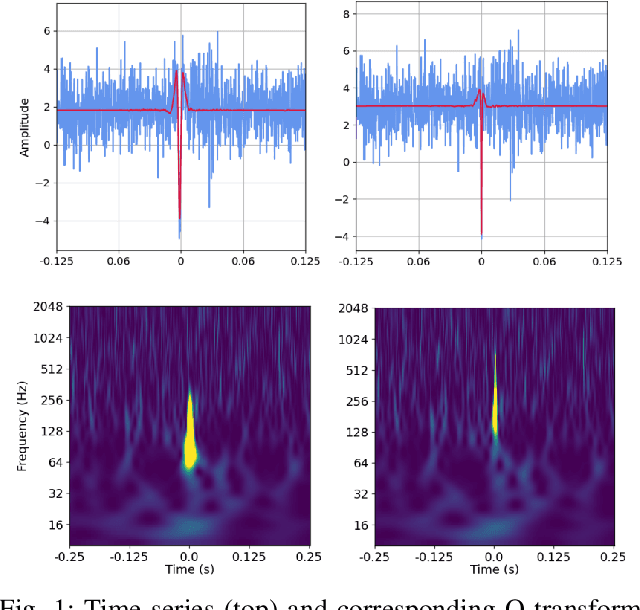

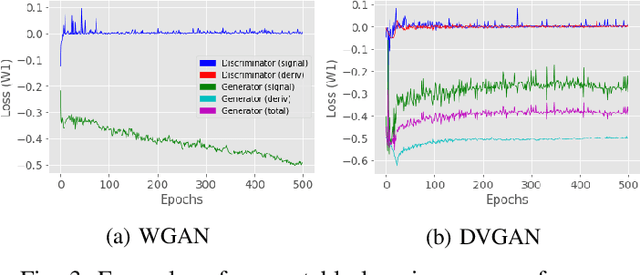

Abstract:Simulating time-domain observations of gravitational wave (GW) detector environments will allow for a better understanding of GW sources, augment datasets for GW signal detection and help in characterizing the noise of the detectors, leading to better physics. This paper presents a novel approach to simulating fixed-length time-domain signals using a three-player Wasserstein Generative Adversarial Network (WGAN), called DVGAN, that includes an auxiliary discriminator that discriminates on the derivatives of input signals. An ablation study is used to compare the effects of including adversarial feedback from an auxiliary derivative discriminator with a vanilla two-player WGAN. We show that discriminating on derivatives can stabilize the learning of GAN components on 1D continuous signals during their training phase. This results in smoother generated signals that are less distinguishable from real samples and better capture the distributions of the training data. DVGAN is also used to simulate real transient noise events captured in the advanced LIGO GW detector.
Using Simulation to Aid the Design and Optimization of Intelligent User Interfaces for Quality Assurance Processes in Machine Learning
Apr 02, 2021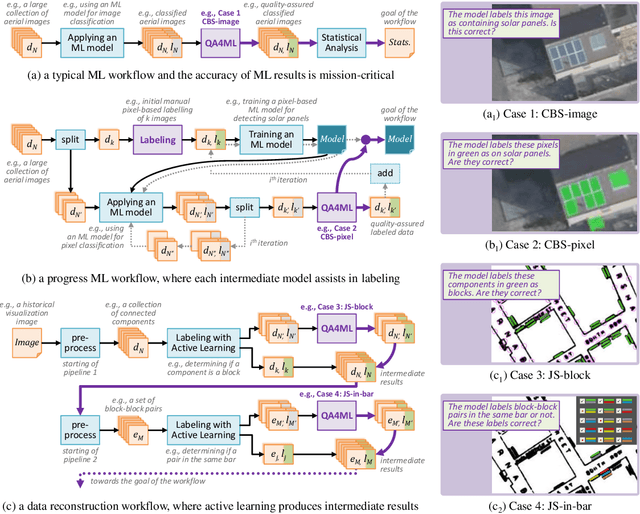

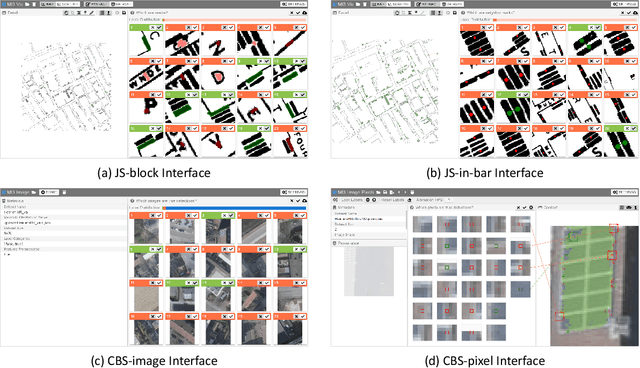

Abstract:Many mission-critical applications of machine learning (ML) in the real-world require a quality assurance (QA) process before the decisions or predictions of an ML model can be deployed. Because QA4ML users have to view a non-trivial amount of data and perform many input actions to correct errors made by the ML model, an optimally-designed user interface (UI) can reduce the cost of interactions significantly. A UI's effectiveness can be affected by many factors, such as the number of data objects processed concurrently, the types of commands for correcting errors, and the availability of algorithms for assisting users. We propose using simulation to aid the design and optimization of intelligent user interfaces for QA4ML processes. In particular, we focus on simulating the combined effects of human intelligence in selecting appropriate commands and algorithms, and machine intelligence in providing a collection of general-purpose algorithms for reordering data objects to be quality-assured.
Monitoring Spatial Sustainable Development: semi-automated analysis of Satellite and Aerial Images for Energy Transition and Sustainability Indicators
Sep 12, 2020
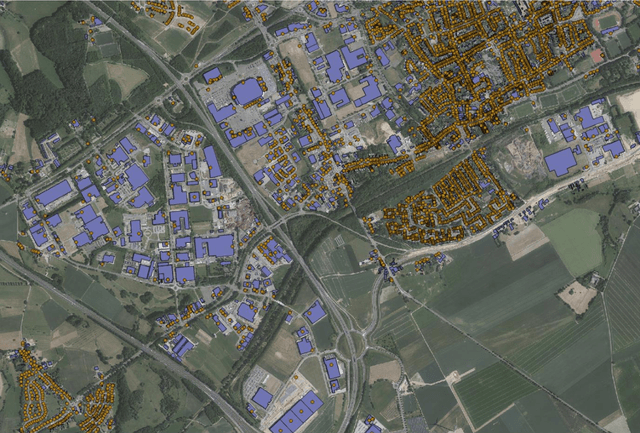
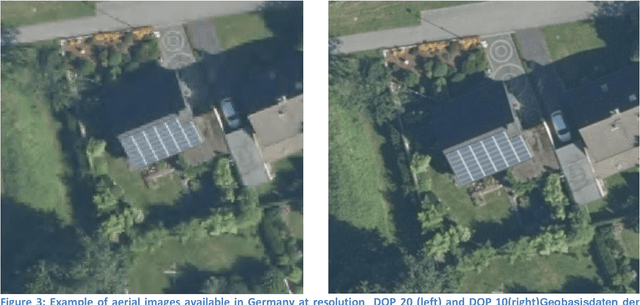

Abstract:This report presents the results of the DeepSolaris project that was carried out under the ESS action 'Merging Geostatistics and Geospatial Information in Member States'. During the project several deep learning algorithms were evaluated to detect solar panels in remote sensing data. The aim of the project was to evaluate whether deep learning models could be developed, that worked across different member states in the European Union. Two remote sensing data sources were considered: aerial images on the one hand, and satellite images on the other. Two flavours of deep learning models were evaluated: classification models and object detection models. For the evaluation of the deep learning models we used a cross-site evaluation approach: the deep learning models where trained in one geographical area and then evaluated on a different geographical area, previously unseen by the algorithm. The cross-site evaluation was furthermore carried out twice: deep learning models trained on he Netherlands were evaluated on Germany and vice versa. While the deep learning models were able to detect solar panels successfully, false detection remained a problem. Moreover, model performance decreased dramatically when evaluated in a cross-border fashion. Hence, training a model that performs reliably across different countries in the European Union is a challenging task. That being said, the models detected quite a share of solar panels not present in current solar panel registers and therefore can already be used as-is to help reduced manual labor in checking these registers.
 Add to Chrome
Add to Chrome Add to Firefox
Add to Firefox Add to Edge
Add to Edge